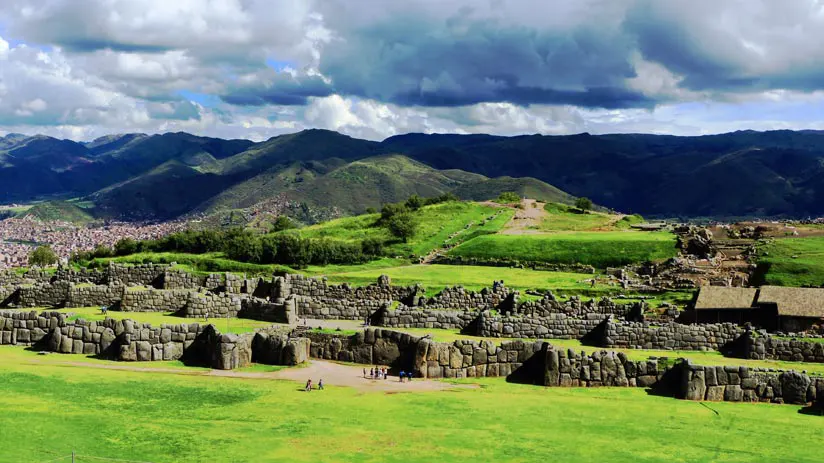If you’ve always dreamed of traveling to South America and visiting all its wonders and mysteries, our next attraction in Peru cannot be missed. Filled with fascinating ancient Inca sites, Peru is a mystery to be revealed to visitors worldwide.
Its south region, Cusco, has many exciting ruins to explore and enjoy. Among them, the one cataloged as the second most impressive attraction after Machu Picchu, by its architectonical style. The Inca fortress Sacsayhuaman contains history, legends, mysticism, and impressive carved stone polygonal blocks of more than 100 tons of weight and 4 meters of allure. Each one forms incredible walls.
For this reason, we and the experts from Machu Travel Peru have prepared a small article about this fantastic Inca fortress.
All about the fortress of Sacsayhuaman
- A general view of Sacsayhuaman fortress
- History of the Inca Fortress
- The architectural design of Sacsayhuaman
- Different areas of the fortress
- The purpose of Sacsayhuaman
- The best time to visit Sacsayhuaman
- Cusco Tourist Ticket to visit Sacsayhuaman
A general view of Sacsayhuaman Fortress
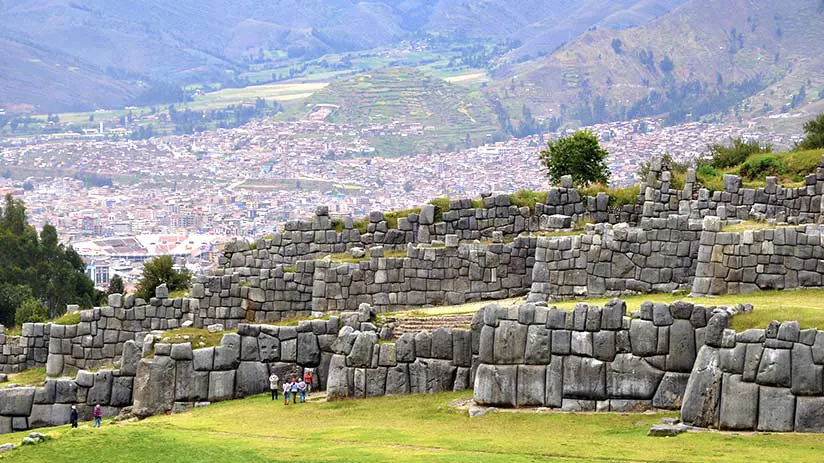
Today, its stone walls are well maintained, and along with the llama and alpaca grazing by the place, you can admire arches and ceremonial altars.
There is a natural rock formation that looks like a children’s slide, which visitors also use as such. Therefore, this Inca fortress is another example of unique Inca architecture; each stone fits perfectly, and the tallest is almost 9 meters high! The foundations are made with limestone from Yucay brought from more than 15 km away.
A. Location
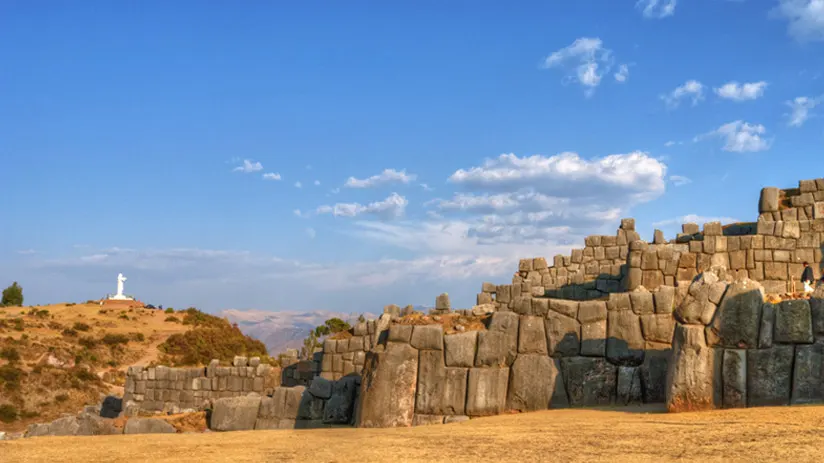
It is located north of Cusco, 2 kilometers from the Imperial city central square, and has an altitude of 3700 m.a.s.l. You only have to follow “Suecia Street”, located on the northwest corner of the main square, and go straight up to the “Salesianos school”. From this point, turn right and follow Don Bosco Avenue for 30 minutes more up to the entrance checkpoint of the archaeological park… Well done!
B. What’s means its name?
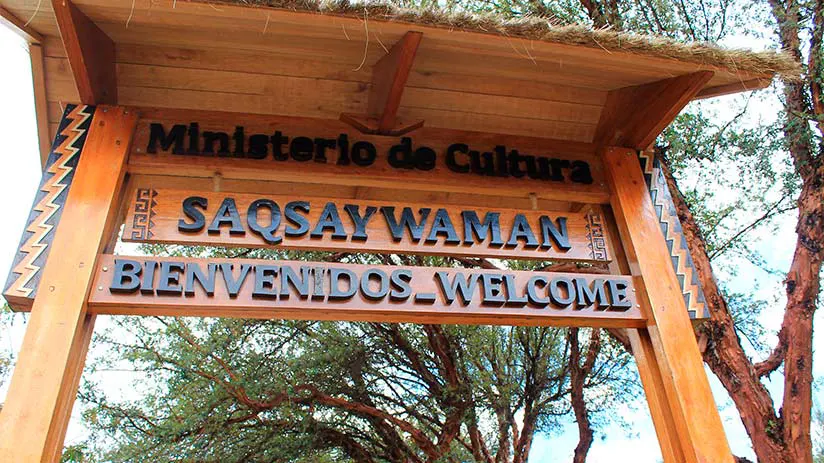
The most important archeological site in Cusco is Sacsayhuaman. Its name is in Quechua, and its meaning varies from “satisfied eagle” to “spotted eagle”, “spotted head”, and “place where the hawk is satiated”. This is probably due to the abundance of this bird in the area during the Inca times.
History of the Inca Fortress
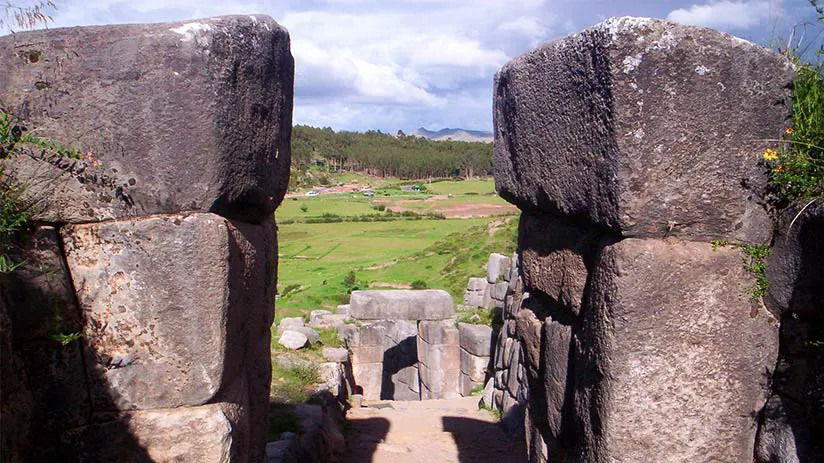
It all began in Viracocha’s Inca age (15th century), when the population increased and a lack of raw materials demanded new territories to inhabit and use. In this form, Viracocha entrusted the expansion plan to the north to one of his sons, a young man named Pachacutec.
The north of Cusco adjoined Chanca’s Confederation zone (remains of towns that belonged to the extinct Wari culture and occupied central Andean of Peru). The Chancas were warrior people looking for their expansion too. In 1438, these northern people took advantage of the relatively calm situation and began a battle against the Incas, closing Cusco. Facing this situation, Pachacutec confronted the war and reached a great victory, clearing the way for the expansion of the Inca empire to the north.
Years later, the victorious Inca Pachacutec (His father gave him the post of Inca ruler) decided to provide the city with new airs and the shape of a Puma, a symbol of power in the Andean culture. This is why Sacsayhuaman was built as the head of the Puma. By the way, you can see this puma shape on any Cusco tourist map today. Back to the topic, this Inca fortress was built during his reign between 1438 and 1471 AD. And it was the following Inca regents who built its massive wall. Of course, its construction lasted a century until the arrival of the Spanish. When the fortress played an essential role in the final defeat of the Incas by the Spanish.
1. A bloody battle
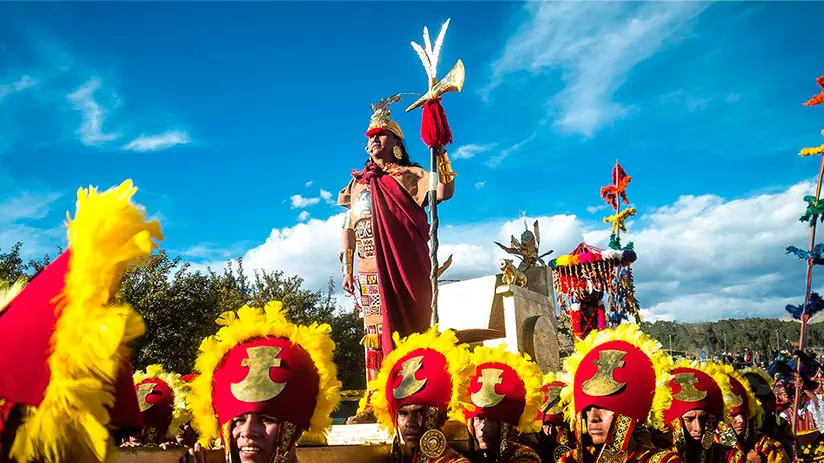
When the Spanish arrived in 1533, they entered Cusco’s Surroundings. The fortress was believed to be a military base for the Inca Manco Capac during the fight with the Spanish conquistadors. After successfully defeating them for the first time, the Europeans settled in Cusco. However, they received constant threats from the rebellious Incas, who still besieged the city from its surroundings and kept the famous Inca fortress some time more.
In this sense, Francisco Pizarro sent his brother, Juan, to recover this fortress in a last battle in 1536. The Spanish used cavalry and ladders to climb the complex’s gigantic walls and towers, breaking the Inca fortress’s defenses against all odds. The battle was bloody; even Juan died on the spot, but the Spanish won and managed to recover the fortress.
Consequently, the Inca fortress was slowly dismantled, and its stones were used to build religious and colonial buildings in the city’s center. Finally, the Spanish abandoned the site without first covering it with dust and hiding it until its rediscovery by Peruvian archaeologists in 1934.
2. Rediscovering Sacsayhuaman
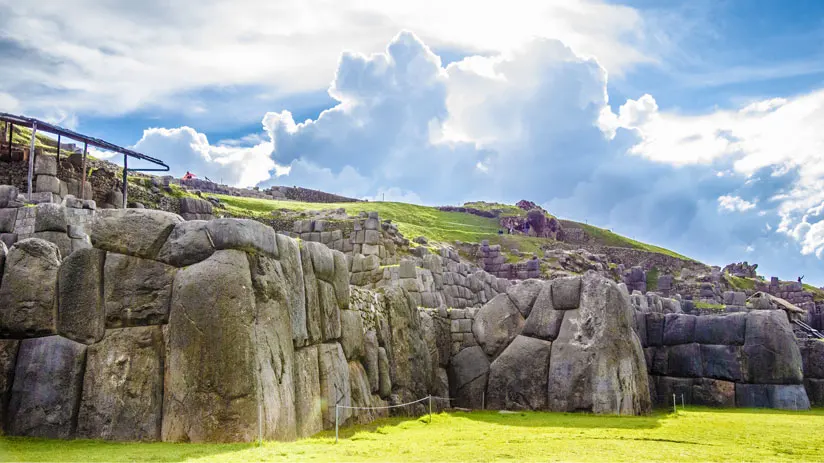
The fortress was always present in the daily lives of Cusquenean and Peruvian people. Outstanding facts are that the complex was rediscovered in 1934 when a crucial archeological zone inside the complex came to light during excavations. Also, in 2008, some digs discovered structural bases of ancient buildings belonging to Killke pre-Inca Culture (Behind the complex). Today, this zone is still being researched.
The architectural design of Sacsayhuaman
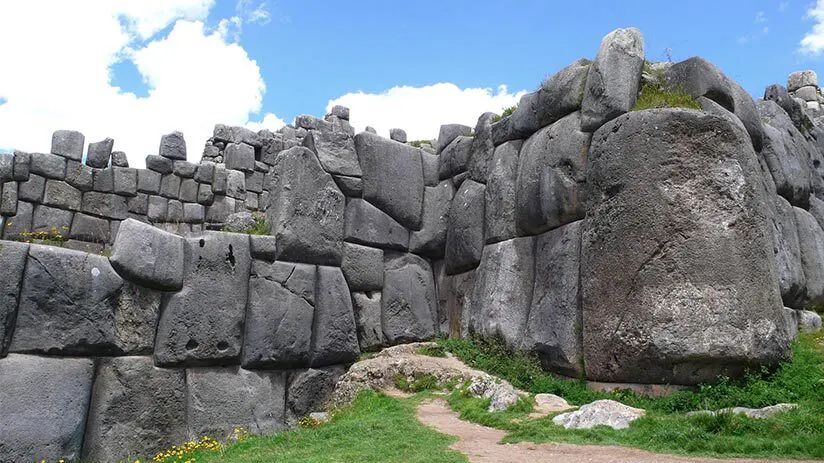
The complex design is based on the shape of a puma’s head, a sacred Inca spiritual animal. The Inca Pachacutec redesigned the city to give it the shape of a lying puma, having this fantastic fortress as its head. It is also worth mentioning that the fortress contains both constructions destined for worship and residential buildings. You can also see some warehouses, aqueducts, roads, towers, and shrines. Also, the shape of the complex can closely resemble the style used in other sacred places such as Machu Picchu. Where it was sought that the buildings and the landscape would blend harmoniously.
1. How could Sacsayhuaman be built?
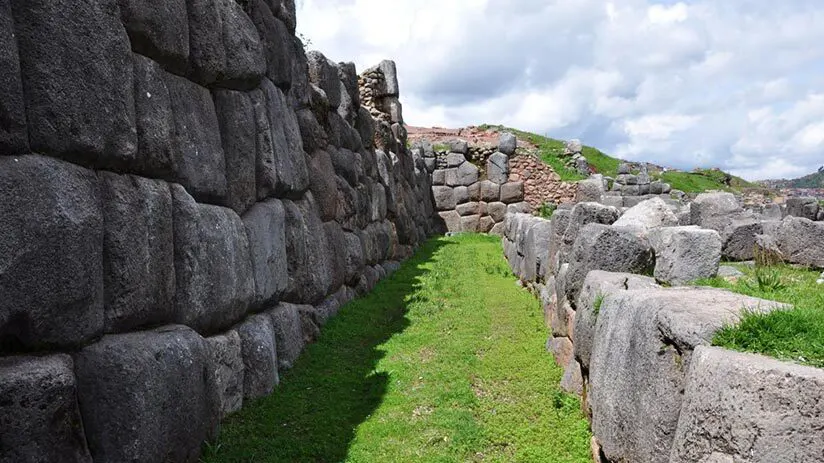
Although the Incas were advanced, they didn’t know the wheel. So they used a technique of hard-work movement. First, the colossal lime rocks were carved in the same quarries of Muyna Waqoto and Rumiqolqa, situated 32 kilometers far away.
Next, they situated the giant carved stones over oiled logs. Several people pulled them and tied down the stones with thick ropes. In this form, the rocks slid over the wooden reeds. Please note that the Incas re-carved these stones, refining them even more at the same construction site.
According to the chronicler Pedro Cieza de León, more than 20,000 people participated in constructing this Inca complex, which lasted approximately a century. The process was slow, but the result endured to the present.
Different areas of the fortress
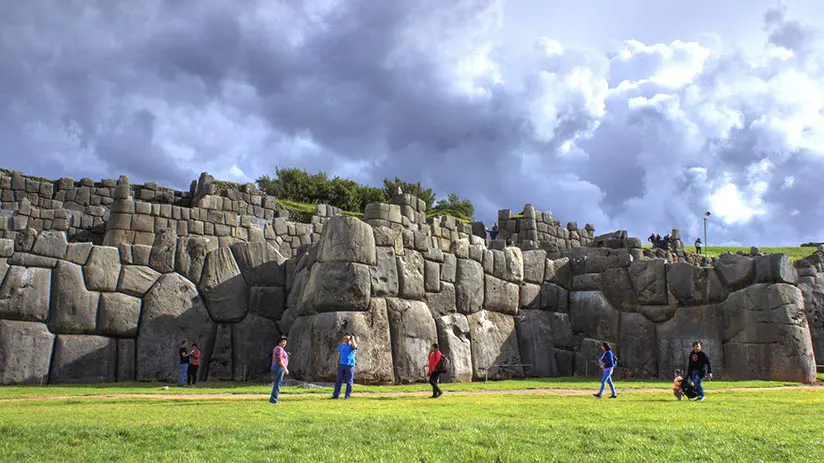
The Sacsayhuaman complex can be divided into different sectors: The primary enclosures, Rodadero, Trono del Inca, Warmi K’ajchana, Baños del Inca, Chincana, Base de Torreones, and the doors, among others.
A. The three terraces
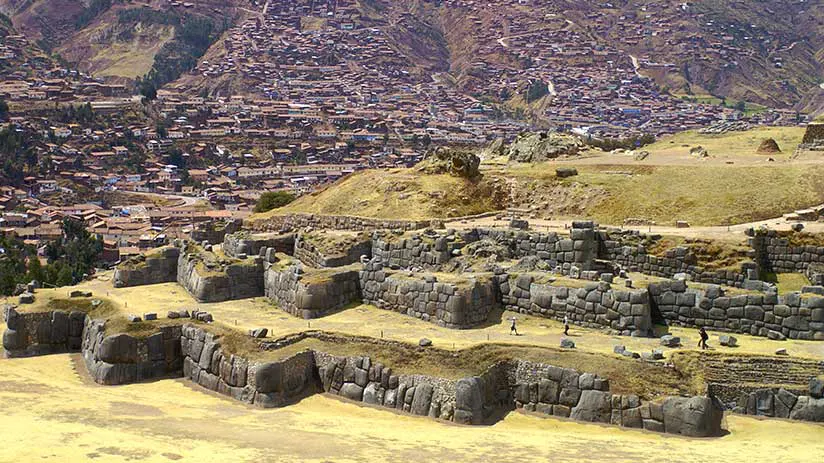
The fortress’s main walls are built in zigzag (like the shape of a lightning bolt or the teeth of an alligator) and with colossal stones. These stones are so well carved that they can fit perfectly with each other without the need for mortar. Also, they can weigh between 90 and 125 tons and measure 2.5 meters wide and about 5 meters high. These constitute three main walls, one behind the other. These walls extend for more than 540 meters and reach a height of about 18 meters.
Anyone who wants to visit the city of Cusco can see the terraces from the city’s main square. Amazing! Each wall has up to 40 segments, allowing an ideal defense against attackers. Its rounded corners, the variety of interlocking shapes of its walls, and the slight inward inclination made this a perfect structure. It is also ideal for surviving the devastating and numerous earthquakes in Cusco in ancient times. The south side is bounded by a polished wall approximately 400 meters long. Meanwhile, in the west and east, they are limited by some platforms and walls.
B. Three Guarded Towers
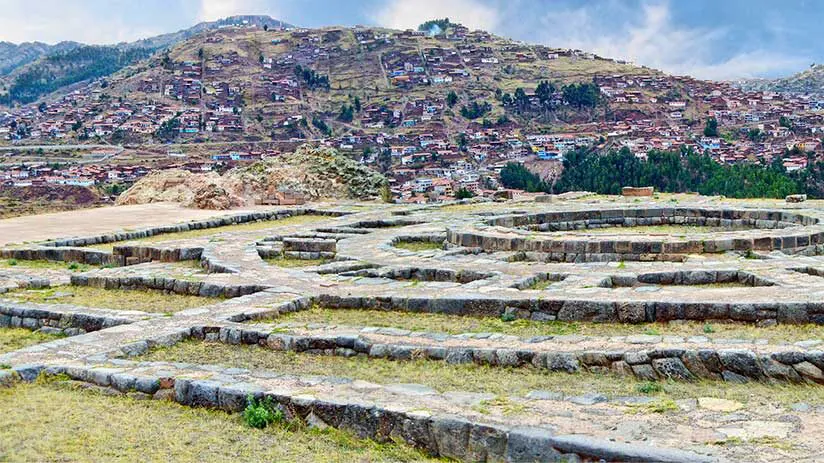
At the top of the Sacsayhuaman, three guarded towers in a straight line linked by a series of underground passages were located over the three terraces previously mentioned.
- Paucarmarca tower: It was further east and possibly served to store water. Also, it’s believed that it was intended to worship the stars. It probably had a square shape due to its foundations, which are still in place and show this form in place. Paucar means party, beauty, and joy, while Marca means population.
- Sallqamarca tower was in the center and interconnected with the other towers through underground tunnels. Sallaq means rough or stony, and Marca means population.
- Muyuccmarca Tower: It is the most famous. It is also called the Cahuide Tower, after the Inca general Titu Cusi Huallpa (Cahuide), who jumped from the tower’s highest part to avoid being caught by the Spanish during the 1536 battle of rebel Incas against the Spanish invaders. The tower’s form was probably circular due to its foundations found in the area. Muyucc means round, and Marca means population.
Side note: In the lower part of El Sol Avenue near the local post office, not far from the main square, you can find a painted wall showing the fight of a brave Inca from one of the three towers of the fortress. Unfortunately, only the foundations of the towers remain today.
C. The doors
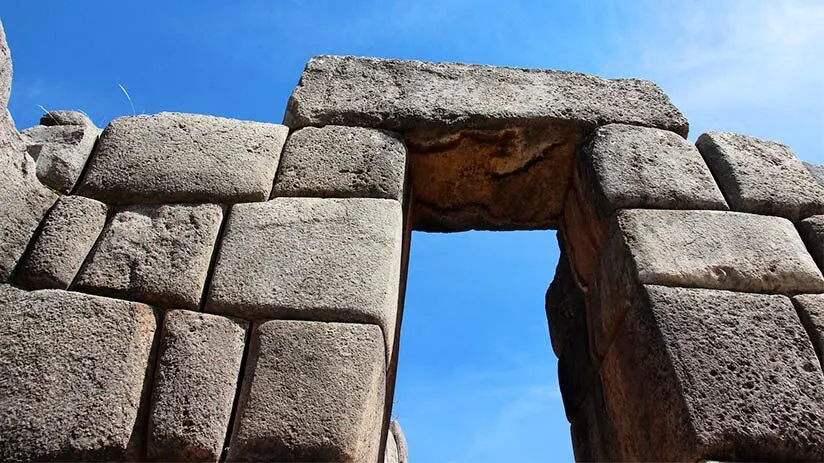
Each of the gates is located in the central part of the bastions and leads to the area of the watchtowers. The gates are trapezoidal, and each of the three has its name. They are named Ajawanapunku Gate (Door where chicha is observed – A traditional Inca drink based on fermented corn, like beer), T’iopunku Gate (Door of salt), and Wiracochapunku Gate (Wiracocha Gate – Wiracocha or “He doer of all” was one of the main Inca deities).
D. The enclosures
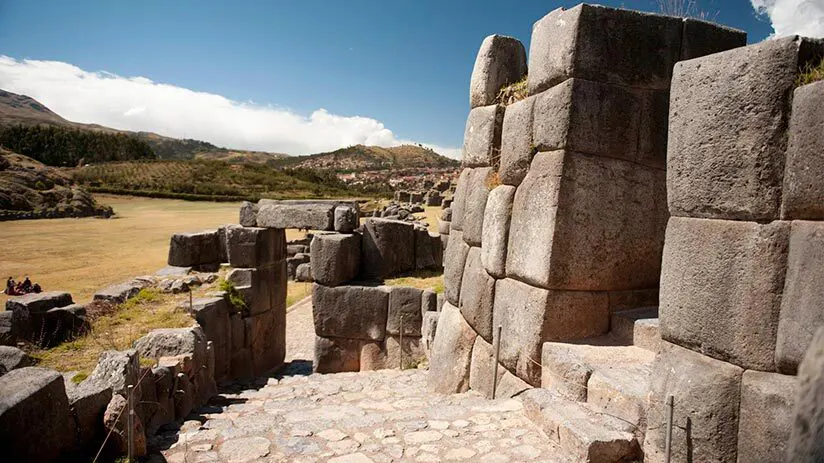
This group of enclosures leans on the slopes of Sacsayhuaman Hill, south and very close to the towers zone. These enclosures were arranged toward the city’s main square and connected by trapezoidal gates. Each enclosure had long and narrow shapes. Their walls were formed by irregular polyhedra with well-polished edges and steep faces.
E. Inca throne
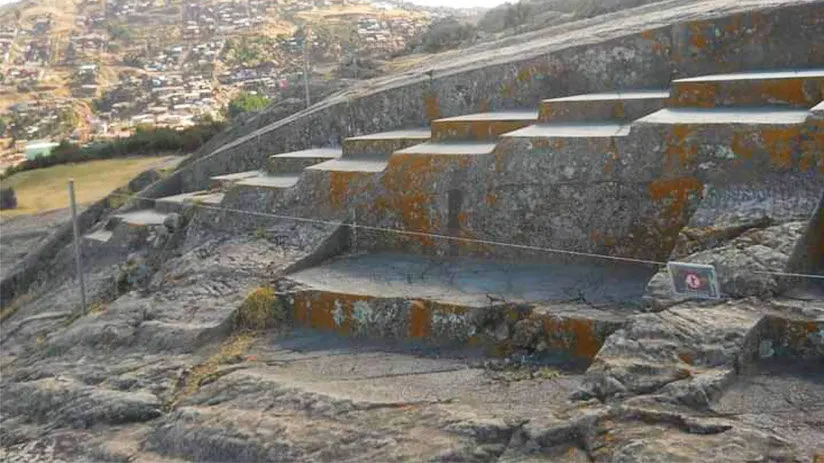
The Trono del Inca (In the Spanish language) is a perfectly carved stone (shape of a seat) located to one side of the fortress, where the Inca (sovereign of the whole empire) presided over parties, ceremonies, and sacrifices on important dates. His name translates as “Where the monkey stands” (K’usilluc Jink’ian in the Quechua language). Recent observations indicate that the sun’s rays fall on this spot during the winter solstice.
F. El Rodadero (Suchuna)
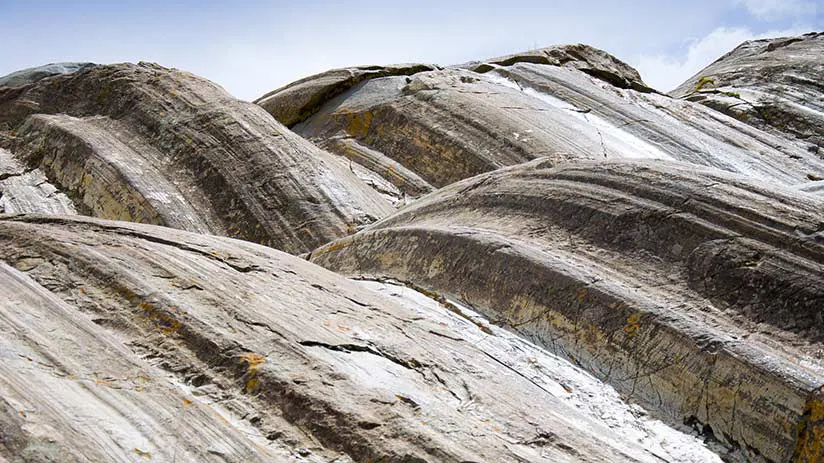
Another area worth visiting is a natural park on the hillside. It is a solidified lava flow from a thousand years ago that turned into diorite. Its natural forms are similar to sea waves. Recent investigations affirm that this place also served as a stone quarry for the fantastic fortress.
The Inca youth played there for hundreds of years, and today, visitors climb the stones and slide down. Sounds great, right? So, don’t hesitate to take one of the different tours in Cusco and visit them. You will not regret it!
G. The tunnels (Chincanas)
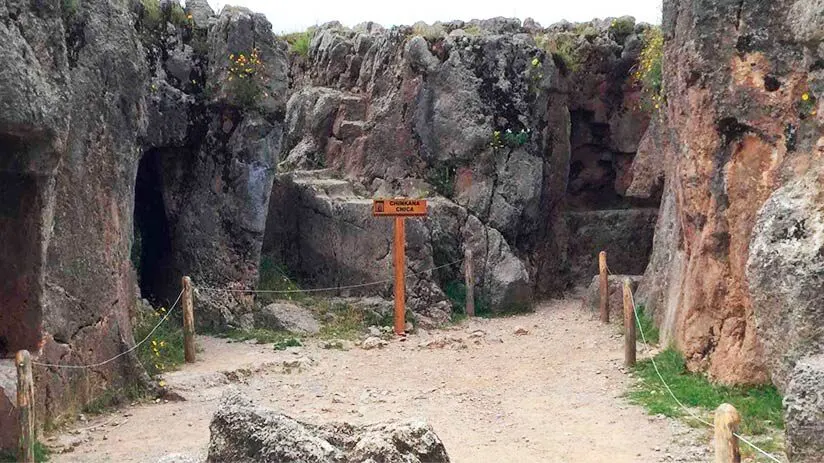
Among your list of most exciting things to do in Cusco, visiting the Chincana is a must-see. These giant caves are located in the same complex. There are two, one more minor than the other one, and are the entrance of a sophisticated system of underground tunnels. Nowadays, the small Chincana is open to visitors; you can enter there (we recommend with a tour guide) carefully and always keep a hand over one tunnel wall to guide yourself due to all the dark space; the exit is located a few meters beyond. In the case of the big one, entry is forbidden because lost people who tried to enter there many years ago to discover its exit.
Some legends affirm that the big one leads to the Coricancha temple of the sun through an underground passage (the Inca Sun temple) located in Cusco city. Until a few years ago, we didn’t know their precedence (Inca or some other ancient culture) or the route that these had under the Complex. Happily, the research of geologist Dr. Carlos Kalafatovich assures that the tunnels correspond to the undermining by the action of groundwater that circulated in the caves.
H. Warmi K’ajchana (Where women are raped)
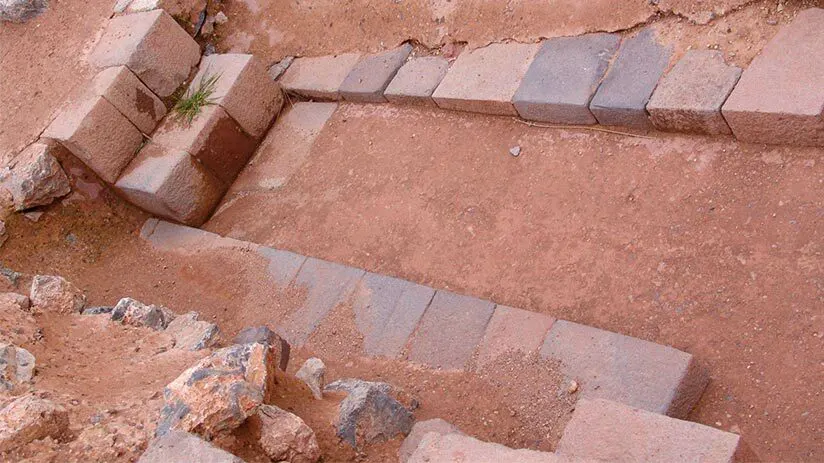
Its controversial name was assigned after 1934 when phallic cult objects were found there. The zone has natural limestone rock formations carved to form passageways, niches, and seat representations of staggered signs, among other things. Nowadays, the zone is still being researched.
The purpose of Sacsayhuaman
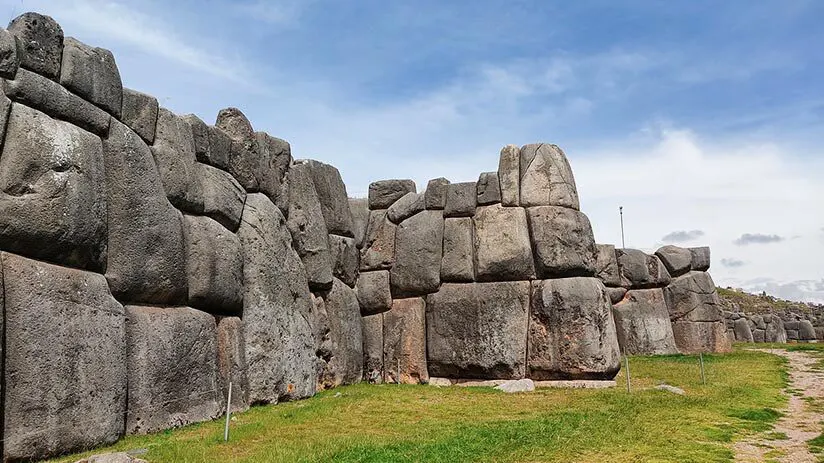
Today, academics discuss its function; some say it was a center destined for the cult of the lightning god (Illapa in the Quechua language) because of the shape of the terrace distribution (zigzag similar to rays). Others indicate the complex was a ceremonial neighborhood of high-level people due to certain zones destined to worship deities. Instead, others claim that the complex was a military fortress due to its location and structure (The last one is more accepted nowadays).
A. Its role in the past
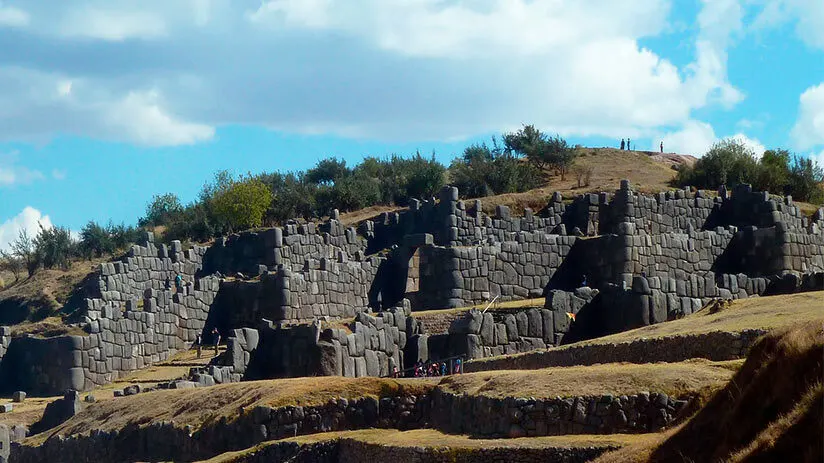
As the lines above described, its function continues to be the subject of debate among many scholars. Some historians believe that the fortress may have been a kind of sanctuary. This is because the complex contained quite a few temples. Among those temples stands one dedicated to the Inca god Illapa (Ray). This is due to the zigzag distribution of the three principal terraces (Shape a Rays).
Evidence shows that the enclosure was used as a kind of deposit. The Incas are believed to have kept food, ceramics, valuable textiles, precious metal tools, armor, and even weapons. Another theory affirms that the Inca complex was an exclusive neighborhood of the Inca elite.
B. Its role in contemporary times
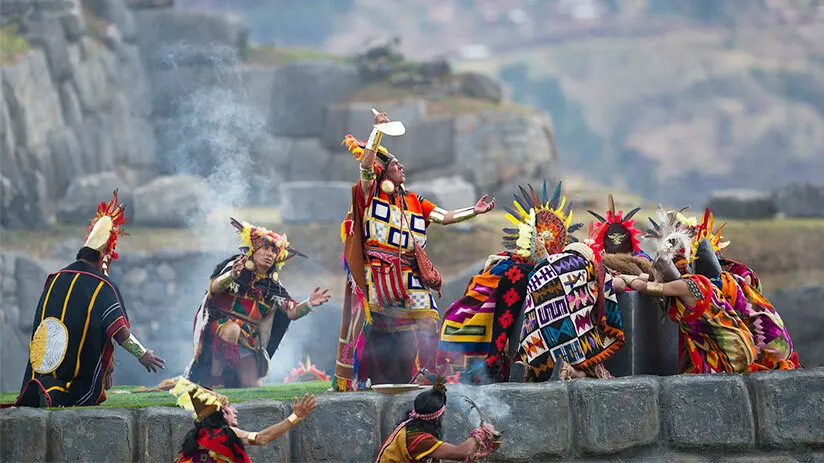
The site was used for many Inca ceremonies in ancient times, which is still the case today, as in the case of Inti Raymi. Every year, on June 24, Cusco celebrates the Inti Raymi, or Festival of the Sun, in honor of the Inca god “Inti”. This is a theatrical performance in the middle of the Inca complex, where you will witness an authentic interpretation of the stories about the heyday of the Incas and outstanding performances of traditional dance and music.
The best time to visit Sacsayhuaman
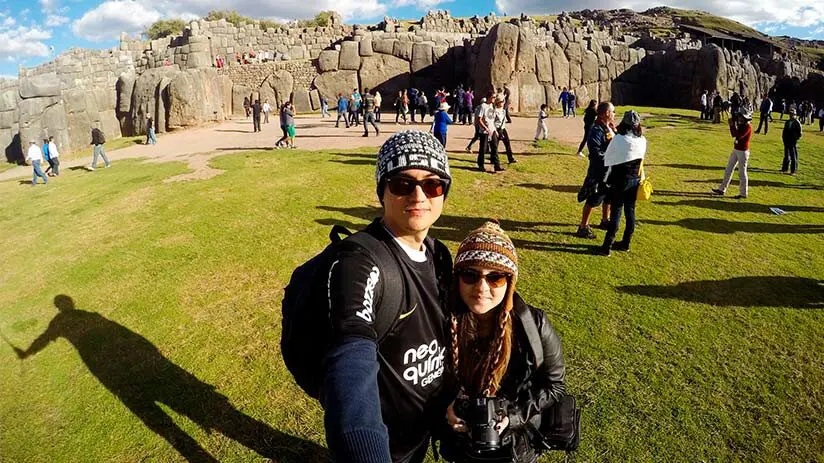
The fortress is located around Cusco. In this form, its climate is cold and dry for most of the year. Therefore, the complex is subdued by the weather of Imperial City. The dry season from April to November is characterized by heavy rays of sunshine and clear skies, with temperatures around 18ºC.
On the other hand, from December to March, the rainy season is known for its heavy rains, cold breezes, cloudy skies, and temperatures that drop to 0ºC. Our recommendation? The dry season is perfect for you if you want the ideal photos. Walking under the rain? This unique experience can only be enjoyed in the rainy season. The choice is yours.
Cusco tourist ticket to visit Sacsayhuaman
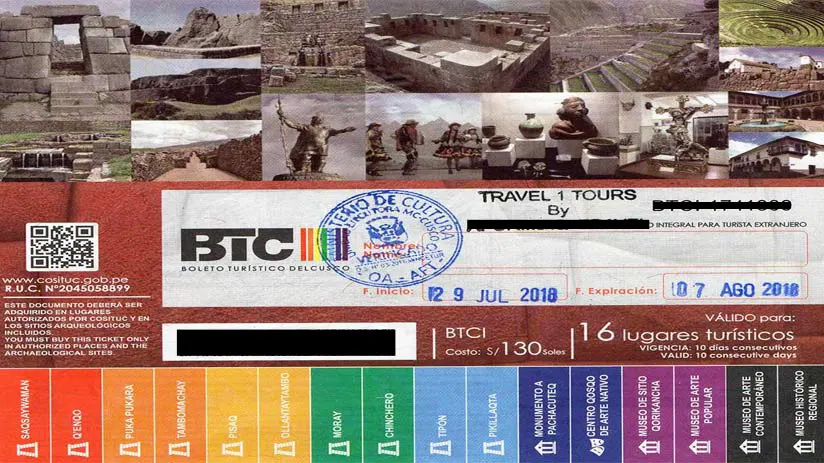
If you are looking for tours in Cusco, you will find that each travel agency offers a city tour with various attractions in Cusco. Still, the most traditional is the one that includes the Cathedral of Cusco, the Qoricancha or Inca Sun temple, and the Complex of Sacsayhuaman (Qenqo, Puka Pukara, and Tambomachay are included). You can book this half-day city tour or go on your own. If you decide on the latter, you must know there is no exclusive entrance ticket to the Inca fortress. On the contrary, the ticket entrance is included in a general ticket that adds the entrances to other archaeological attractions.
The so-called “tourist ticket of Cusco” can be purchased at the COSITUC office (Avenida El Sol, Nr. 103) from Monday to Thursday from 8 a.m. to 5 p.m. or Saturday from 8:30 a.m. to 12:30 p.m. Or in the checkpoint of all Cusco archaeological parks, in the schedule of operating of referred parks, usually from 07:00 am to 05:00 pm. You will notice that there are different tickets available that include the entrance to other archaeological sites, which are:
- Boleto Turistico Parcial I: This ticket is 70 Soles, valid for only one day, and includes circuit I: Sacsayhuaman, Q’enko, Puka Pukara, and Tambomachay archeological sites.
- Boleto Turistico Parcial II: It is also 70 Soles, but it is valid for two days, including the circuit II: Qorikancha Museum, Regional History Museum, Museum of Present Art, Pachacutec Monument, Museum of Popular Art, Qosqo Center of Native Art, Tipón, and Pikillacta archeological sites.
- Boleto Turistico Parcial III: This ticket costs 70 Soles and is valid for two days. It includes Circuit III, which includes the Ollantaytambo, Pisac, Chinchero, and Moray archeological sites.
- Boleto Turistico General: This ticket is 130 Soles, valid for ten days, and includes all those mentioned above three primary circuits and their attractions: The referred Inca fortress, Q’enko, Puka Pukara, Tambomachay, Qorikancha Museum, Regional History Museum, Museum of Present Art, Pachacutec Monument, Museum of Popular Art, Qosqo Center of Native Art as well as the archeological sites of Tipon, Pikilacta, Ollantaytambo, Pisac, Chinchero and Moray.
As you can see, the different “Boletos Turistico del Cusco” types offer archaeological sites in Cusco! Therefore, buying one is recommended. Please take advantage of their reasonable prices to experience a complete tour of the other attractions in Cusco and the unique archaeological sites of the city.
“WITH AGE COMES WISDOM. WITH TRAVEL, COMES UNDERSTANDING”
When you visit Cusco on your vacation in Peru, don’t forget to spend time in Sacsayhuaman and feel its history and mystery. Learn about the wonderful Incas, marvel at the beauty of the fortress, enjoy the views of the surrounding mountains, and take many photos of Cusco from this beautiful viewpoint. It is worth spending many days exploring the city of Cusco. There are many excellent museums where you can get an idea of Inca history. It is filled with great nightlife and many exceptional restaurants to rival Lima. Don’t worry, there are also many vegetarian restaurants in Cusco if you don’t eat meat. We hope, together with the experts of Machu Travel Peru, to have solved your doubts. So, what are you waiting for to book your vacation in Peru today?
